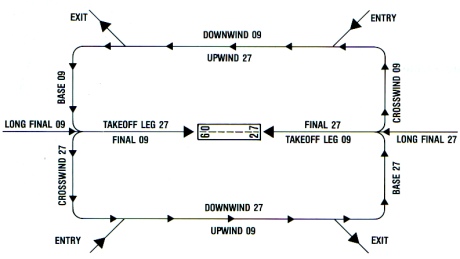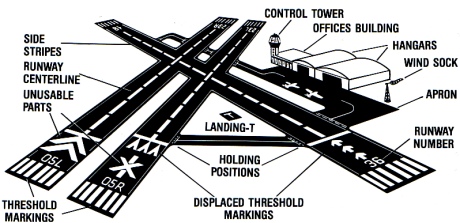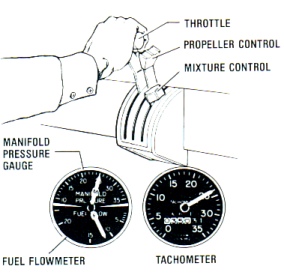|
|
|
|
IFR RULES and NAVIGATION |
|
|
THE AIRPORTS
or AERODROMS:
According to different conditions of traffic, use, ownership, etc., an airport can be classified with one or more of the following attributions: 0 airport of entry, or custorns airport,
THE RUNWAYS Runways are classified according lo their length and width, and according
to the load they can bear, expressed by the pavement classification number
(pcn). |
|
THE AIRPORT TAXI CIRCUIT
The movement areas, or aprons, the run-up areas, and the taxiways form the airport taxi circuit. The taxiway designators and/or the follow-me car help the pilots lo find their way to the runway in use or to the parking area.  |
|
Le parti principal i di un aeroplano sono:
L'aereo completo, senza l'apparato propulsore, è chiamato cellula. Le parti portanti della cellula sono i longheroni alari, le centine, e le ordinate di fusoliera. |
CLASSIFICATION
OF AIRCRAFT
According to their maximum takeoff weight, they can be light, medium, or heavy. The main parts of an airplane are:
The complete airplane, without the power plant, is called the airframe. The airframe's structural members are the longerons, the spars, the ribs, and the buikheads. |
| Il contagiri, che indica la velocità di rotazione del motore espressa in giri al minuto
(RPM). Il manometro della pressione di alimentazione, che indica la pressione assoluta esistente nel collettore di aspirazione del motore, normalmente espressa in pollici di mercurio. Il manometro della pressione dell'olio, generalmente graduato in libbre per pollice quadro (psi). Il termometro della temperatura dell'olio. Il termometro della temperatura dei cilindri. Il termometro della temperatura dei gas di scarico. Il flussometro, per i motori a iniezione, graduato in galloni all'ora o libbre all'ora. Il termometro della temperatura dell'aria nel carburatore, per i motori a carburatore. L'amperometro, o indicatore di carico. Gli indicatori della quantità di carburante, graduati in galloni o litri. Il manometro della pressione del carburante. |
THE POWER
The engine instruments, or gauges, or indicators. Most of them have green arcs indicating the normal operation range, yellow ares indicating the caution range, and red lines which mark the limit values.
The most common ones are:
|
|
WEIGHT AND BALANCE GRAPHS
Total aireraft weight must never exceed maximum takeoff weight. Furthermore, since the distribution of weight in an aircraft is as significant as weight, pilots must check weight distribution, or balance. An aireraft is said to be balanced when its center of gravity is resting within its forward and after limits, stated by the manufacturer. To assist pilots in theirjob, manufacturers supply the loading graph and the center of gravity envelope graph. The first one allows io determine the total load moment, and the second to find out whether the moment and the total weight fall within their limits. Performance charts help to figure out what the aircraft will be able to offer in terms of takeoff run, landing run, rate of climb, endurance, range, true air speed, etc. To correctly interpret performance charts, a pilot must have a clear understanding of terms such as:
|
|
Prima di
tutto urge conoscere la scala di importanza dei vari messaggi, in modo
tale da non dare troppa importanza a messaggi che possono essere solo di
informazione:
Una Comunicazione che deve essere fatta in un certo modo è la "trasmissione all'aria" (blind Trasmission), la quale significa che la radio è rotta in ricezione (noi non possiamo sapere se solo in ricezione) oppure nel caso in cui l'aeroporto sia incustodito e privo di "controllore del traffico". Inoltre il volo IFR è soggetto a vari passaggi con relative informazione da copiare soprattutto a terra:IFR ordine di chiamata a inizio volo:
|
|
|
Istruzioni: |
|
| I-ABCD | Questo è il nominativo che utilizzeremo (India - Alfa Bravo Charly Delta). |
| "In NERO" | Saranno le parole della "Torre" o "ente" preposto al traffico. |
| "In BLU" | Saranno le parole dal velivolo (del pilota o navigatore) |
| (...) | Le parole tra parentesi si possono anche omettere. |
|
In IFR la fraseologia diventa ancora più standardizzata e richiede passaggi e ordini di chiamata ben precisi: |
|
| Seguendo l'ordine di chiamata:
DEPARTURE INFORMATION |
Un esempio: "Orio Twr, Meridiana 345, Request Departure information." "Runway in use 11, no wind, visibility 50mt, RVR A200mt, B300mt, C1000mt, QNH 1025" "Runway in use 11, no wind, visibility 50mt, RVR A200mt, B300mt, C1000mt, QNH 1025, Meridiana 345" |
| Request start up... | Esempio:
"Orio twr, Meridiana 345, IFR to GENOVA, Request start up." "Start up approved Meridiana 345" |
| Request Taxy | Esempio:
"Orio Twr, Meridiana 345, Apron A4, Request taxy" "Runway 11, taxy to holding Point Cat. 3, Meridiana 345" "Taxy to holding point Cat. 3, Runway in use 11, Meridiana 345" |
| Ready to copy ATC Clearance... | Esempio:
"Orio Twr, Meridiana 345, Ready to copy ATC clearance" "Meridiana 345, Cleared to Genova via Voghera 1A Departure, climb to 6000ft, squack 0304." "Cleared to Genova via Voghera 1A Departure, climb to 6000ft, squack 0304, Meridiana 345" |
| Departure... | Esempio:
"Orio Twr, Meridiana 345, Ready for Departure." "Cleared to line up and take off, meridiana 345" "Cleared to line up and take off, meridiana 345" |
|
Argomenti Correlati:
|
|




